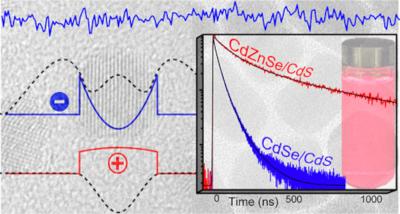Researchers led by a team from the University of Chicago developed a new method to synthesize large-area ("giant") light-emitting QDs that emit light following an exciton state for over 500 nanoseconds, which is a new record.
The new QDs are based on a structure that allows the electrons to focus on holes within a core or shell heterostructure. This is performed by tuning the charge electron to the kinetic energy of a parabolic potential energy surface.
These new QDs and their long-lasting PL emission may be useful for bio-imaging, and also perhaps to be used in micron lasers or find applications in future displays.
Source:
Posted: Dec 13,2022 by Ron Mertens
